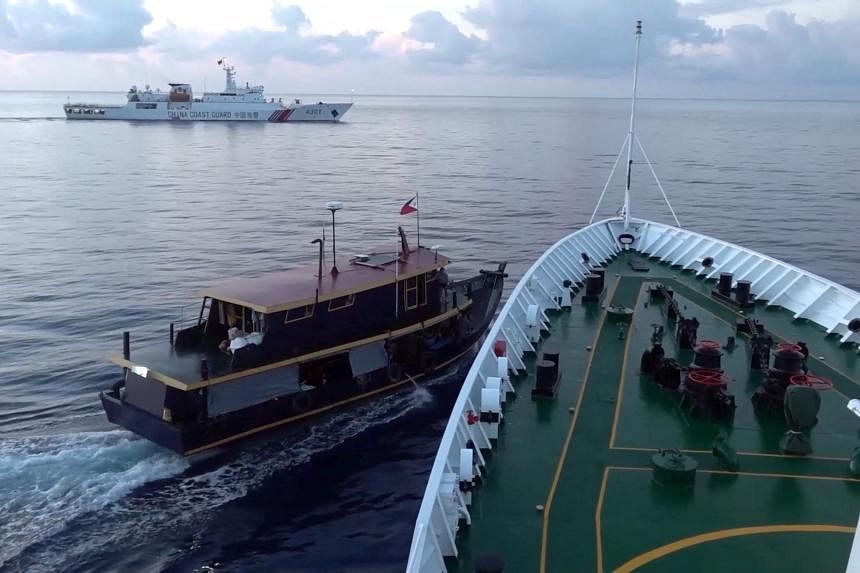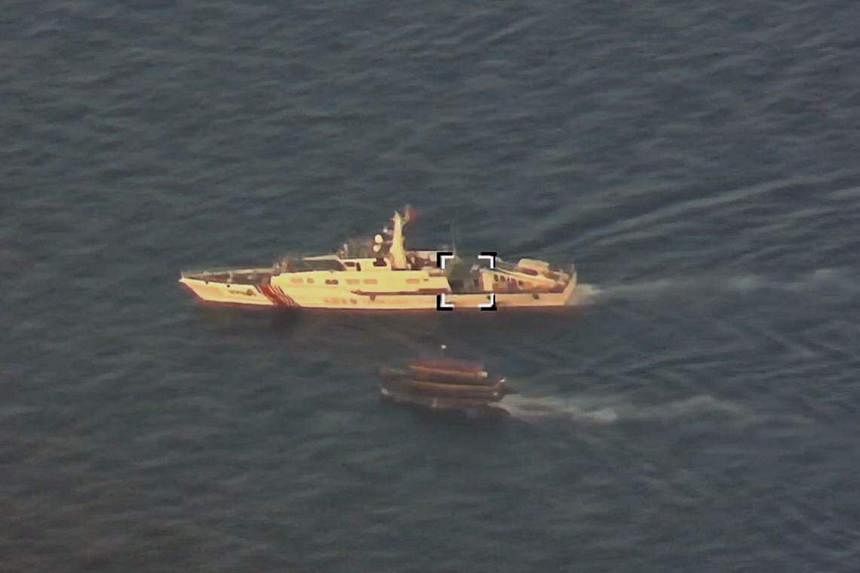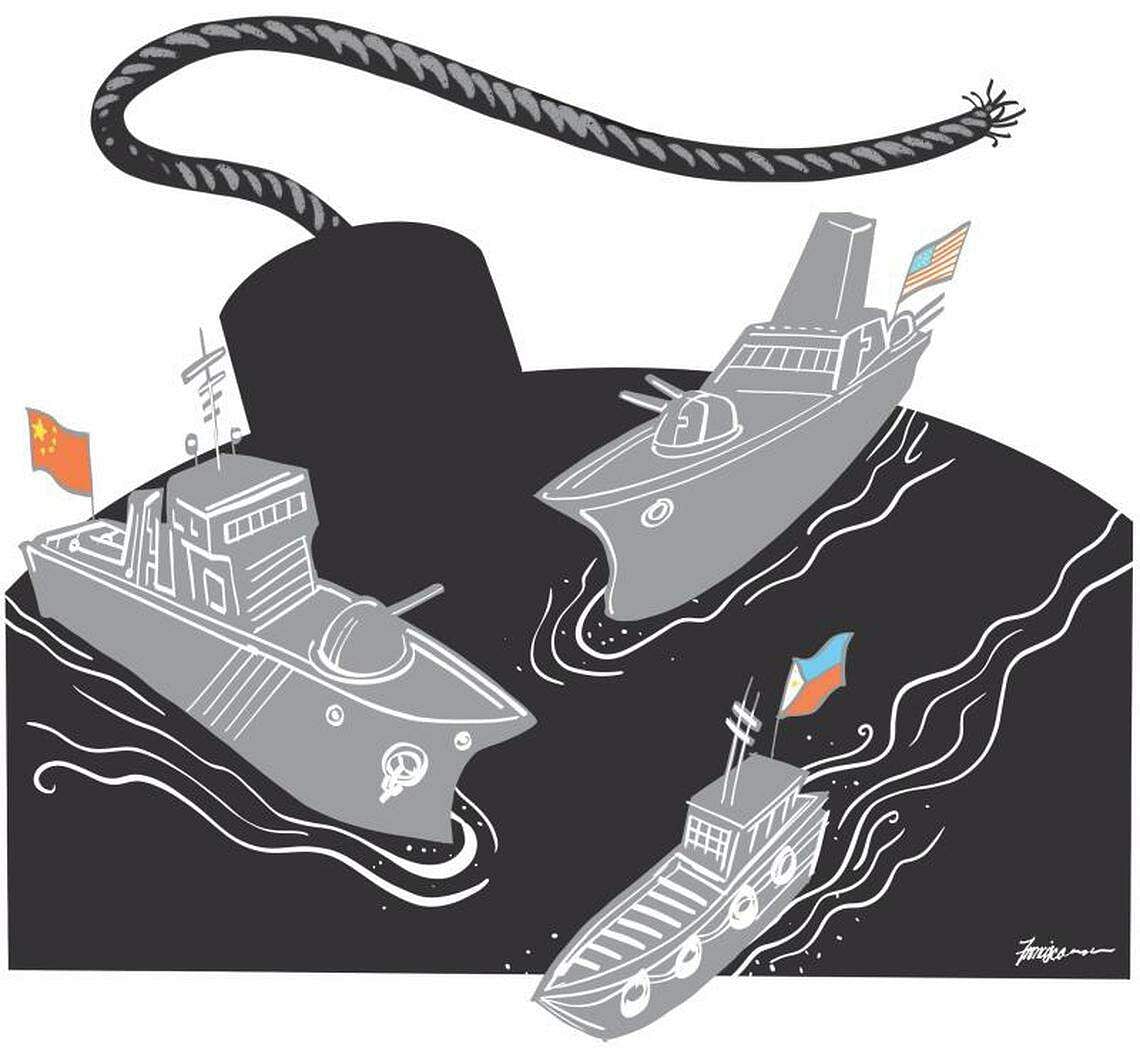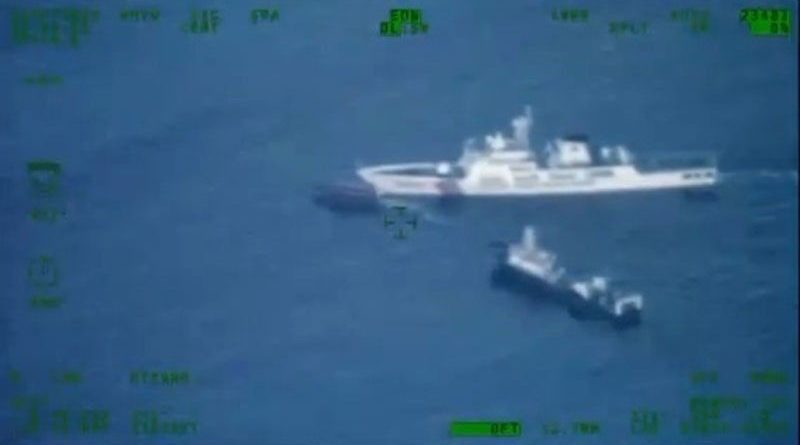OP ED | OPINION | ASIA GEOPOLITICS | No mere scratch: South China Sea collisions could set off a wider conflict

China calls last weekend’s bumping of a Philippine resupply vessel by one of its coast guard vessels a “slight collision”. The Philippine coast guard commander says the ensuing damage to his ship was “more than a scratch”.
For months, this was the precise worry: that the threatening manoeuvres at sea and in the air that have set China against a host of other nations – the Philippines, Vietnam, Japan, Canada and the United States – would one day lead to a dire situation in which things swiftly spin out of control, with far-reaching consequences.
Now, not one, but two collisions have taken place in the waters around the Philippine-occupied Second Thomas Shoal, which is claimed by China.
Images shared by the Philippine coast guard showed three of four boats involved in the resupply mission to the grounded ship Sierra Madre being surrounded by seven bigger Chinese coast guard and maritime militia vessels.
Philippine Defence Secretary Gilberto Teodoro calls it a “serious escalation”.
As anyone who has ever lit a match knows, a well-timed scratch is all it takes to start a flame. This time, it appears that two may have been lit in a single day.
Where do we go from here?
Whichever way you look at it, a line has been crossed in the South China Sea.
That unhappy moment of “accidents”, against which Asean leaders prayed for, is upon us – and from all visual evidence, no accident at all, but a deliberately caused incident.
On Monday morning, even as the foreign ministries of the Philippines and China summoned each other’s ambassadors to lodge strong protests, the US State Department had already responded overnight.
US response
It put out a statement saying that Second Thomas Shoal is a feature well within the Philippine exclusive economic zone and on the Philippine continental shelf.
It made clear that an international tribunal’s July 2016 decision – which it characterised as legally binding on both the Philippines and the People’s Republic of China – made clear that “there exists no legal basis for any entitlement by China to maritime zones in the area of Second Thomas Shoal”.
It went on to call China’s territorial claims “unfounded” and the Chinese actions in the waters “provocative”.
What is more, the State Department reaffirmed that the US-Philippines Mutual Defence Treaty extends to armed attacks on Philippine assets, including those of its coast guard, “anywhere in the South China Sea”.
A readout of a subsequent phone call between US National Security Adviser Jake Sullivan and his Filipino counterpart Eduardo Ano echoed that language, and concluded by saying that the treaty extends to “armed attacks” on Philippine public vessels, aircraft and armed forces – including the coast guard – “in the Pacific, including in the South China Sea”.
Perhaps we can draw the faintest relief by noting that both statements, including the one from Mr Sullivan, who is considered to be a hardliner on China, spoke about “armed attacks” being the trigger point.
To the extent that the Chinese coast guard ships seem to have kept their guns covered, or lowered, even as their hulls bumped against the Philippine vessels, of which at least one was a chartered private boat, the situation may be thought to be still below the threshold for the US to swing in.

What adds to the situation, though, is that the China-Philippines scrapes around Second Thomas Shoal are not the only worry.
On Oct 18, the US Defence Department released a series of pictures and videos that showed several close encounters between Chinese and American pilots in international airspace.
Footage released of 15 incidents that took place over the East China Sea and the South China Sea shows, in one instance, a People’s Liberation Army (PLA) pilot coming within 6m of a US warplane.
In another video, a PLA pilot is seen performing a barrel roll under an American plane.
Dr Ely Ratner, a US assistant secretary of defence, has been quoted saying that there have been no fewer than 180 such incidents over the past two years.
According to him, that number exceeds the count of similar incidents in the decade to 2021.
“When you take into account cases of coercive and risky PLA intercepts against other states, the number increases to 300 cases against US, ally and partner aircraft,” he said.
China says the US is spreading misinformation.
In the incidents between the Philippines and China around Second Thomas Shoal, it is not clear what prompted the latest escalation.
The timing shows that they took place a day before China and Asean were to meet for the latest round of negotiations for a Code of Conduct in the South China Sea, meant to head off precisely such incidents.
This week, Chinese Foreign Minister Wang Yi is to travel to Washington for talks with Secretary of State Antony Blinken.
The incidents may well be a way of signalling Beijing’s resolve to hold its ground on key matters that will come up during the talks, and the summit that is being scheduled between Chinese President Xi Jinping and US President Joe Biden in November.

The big worry
Regardless of those factors, the collisions were not entirely unforeseen. Days before they took place, a senior Asian diplomat in Manila told me of his forebodings of precisely such incidents, adding that several of his peers in the Philippine capital shared that assessment.
“The Filipinos are an emotional people, and President Marcos cannot ignore the public sentiment to hold out strongly against China,” he said. “He has done well on the economy and now wants to also build a profile in national security. Hence, his comments such as ‘not yielding an inch to China’.”
Another senior figure in Manila told me Filipinos seem convinced the US will have their back in the event of a confrontation, and that is stiffening their resolve. A sea battle involving the respective coast guards, he said, is no longer beyond the realm of possibility.
Although neither China nor the US and its allies are looking for a war, “the light in the tunnel is dimming”, said this person.
“The US and Philippines are still in ‘gathering diplomatic support’ mode. The Chinese, meanwhile, are trying to wear down the confidence of the Filipinos, and persuade them that the US will not come in, in a real fight. They are also exploiting the American distraction with the Middle East to their advantage.”
While those are short-term factors, some medium-term developments bear watching, and also probably have started to influence the situation.
The Philippines’ naval assets are materially improving, albeit gradually; in September, the US handed over two refurbished Cyclone-class patrol vessels to the Philippine navy under its Excess Defence Articles programme.
Four more vessels from the US are expected by the end of 2023.
The US and the Philippines now do what are called “joint sails” in the West Philippine Sea, which is what Manila calls that part of the South China Sea, which forms part of its exclusive economic zone. By the end of the year, the joint sails will be upgraded to “joint patrols”.
Separately, France has improved the anti-torpedo systems on Philippine frigates, whose combat management systems were previously upgraded by South Korea.
Meanwhile, India has supplied shore-based sea skimming anti-ship cruise missiles.
That makes Second Thomas Shoal comfortably within range of Palawan-based missiles, as would be the Bashi Strait if those missiles were to be based in northern Luzon.
Where’s Asean’s voice?
Now, Manila is looking for support closer to home, from its Asean peers. At some point, Asean will need to heed the calls for a common statement on what President Ferdinand Marcos Jr calls the dangerous use of militia vessels and its coast guard by China in the South China Sea.
As long as the incidents were minor, such as the use of water cannon, Asean generally looked the other way. But collisions are way too serious to be ignored.
The Asean reaction, though, will likely need to be in the shape of a chairman’s statement from Indonesia, which holds the position until December. That is because neither Cambodia, Laos nor even Vietnam is likely to relish participating in any consensus statement that speaks too firmly to China.
Jakarta, explained a senior Indonesian government figure, has its own distractions; among other things, Foreign Minister Retno Marsudi, who is now at the United Nations General Assembly in New York, also has to pay attention to the situation in West Asia that has developed since Hamas attacked Israel on Oct 7.
What is more, he said, Indonesian President Joko Widodo has just returned from the Belt and Road Initiative forum in Beijing hosted by Mr Xi – thrilled that he was treated with almost the same cordiality as Mr Xi showed Russian President Vladimir Putin.
It is not easy to criticise a host who has just shown you so much consideration.
Personal and national compulsions aside, it may be coming time for the region to stand up as one because, if things continue this way, a big moment that is potentially catastrophic might be approaching.
With each passing day, the question to ask is not where that will be, but when.
This article has been edited for clarity.



 Memento Maxima Digital Marketing
Memento Maxima Digital Marketing








